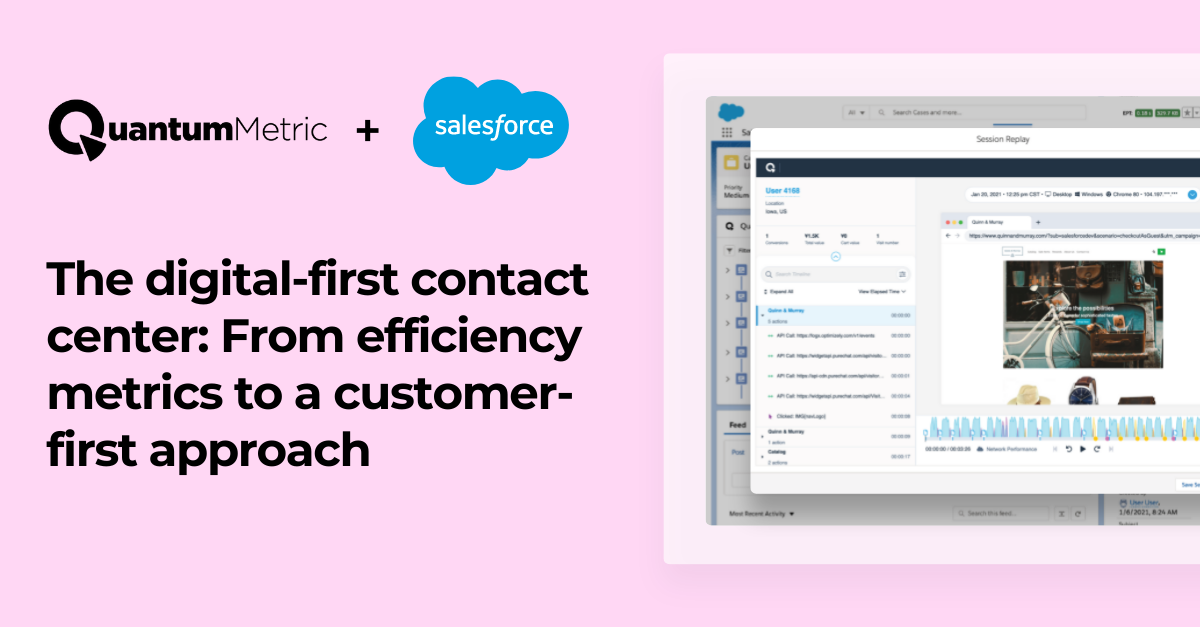Have you enabled your contact center agents to be brand ambassadors?

There was a time, pre-2020, when stores hired sales people and banks hired tellers that were brand ambassadors. They greeted people with a smile, they knew everything about the product and what was in stock, they could help a client open an account or select the right retirement plan. However a shift from brick and mortar to digital-first customer service has in many cases moved forward without consideration for a new set of customer support skill sets for agents tasked with fielding support requests from customers trying to accomplish online what was once an in person engagement.
Salesforce’s recent State of Service says that 54% of customer service professionals report their organizations experienced increased case volume during the pandemic. At the same time, 55% of consumers noted that their standards for customer service had risen.
Evolution of the agent experience
Call center agents once brought to mind a room full of chatty individuals with headsets taking call after call. The shift to a more digital-focused commerce environment has changed the call center to a contact center providing more ways for customers to contact support beyond the phone. That shift was amplified in 2020.
“The Contact Center industry has jumped forward five years in three months.”
— Leigh Hopwood, CEO, Call Centre Management Association
That shift has moved agents sitting in a room with a swivel chair option for support from your peers and managers to working from anywhere. Agents and contact center leaders have had to quickly adjust and often without much support.
That same Salesforce report states that 82% of consumers expect to continue contacting customer service at pandemic-level rates, and an additional 10% say their contact rates will rise even higher. Yet just 36% of service professionals feel fully prepared to handle a surge in service and support cases, and just 39% feel fully prepared to handle increased case complexity.
More channels, more problems
There was a time when there was just one way to contact the support center of your favorite online store, bank or travel vendor and that was the phone. As a focus on digital assets like web and mobile apps increased to address consumer shifts online, so did the channels in which consumers could contact support. When you visit a site today, you may see options to chat, email, submit a case via a web form, schedule a call back and more. Each of these channels has increased the level of complexity and the tone in which agents need to engage with customers. And as businesses have added more options to the digital experience more customer journey’s have emerged creating more confusion in some cases and more frustration.
The struggle between KPIs and the customer experience
Like most individual roles in business, contact center agents have a set of goals or KPIs (key performance indicators) that are tracked and measured to determine effectiveness. These KPIs often center around how quickly an agent can close a case and don’t often take into account the customer experience. Average handle time (AHT), first response time (FRT), after call work time (ACW) just to name a few. These metrics focus on speed and efficiency but not necessarily on the customer experience.
Agent detectives
An agent’s job is often to play detective guessing what a customer means when they say “the button didn’t work” or “I couldn’t check out and I don’t know why.” Asking a customer to explain their frustration often leads to more frustration—now imagine you ask them to explain it to more than one person as a case gets escalated. Customer feedback can be vague and an agent must sort through and make an educated guess on how to help the customer in the moment. Tools like co-browsing can help but often agents ignore co-browsing since it requires manual activation and hits hard at the KPIs agents are judged on.
The shift to brand ambassadors
How do you shift contact center agents from detectives measured on speed to brand ambassadors with a focus on a white-glove customer approach?
The answer on how to turn your agents into your brand ambassadors is to flip the way you engage with customers before, during and after an experience and to provide tools that help not only agents but customers. With the more consumers moving away from brick and mortar, your support agents may be the only brand ambassador your customers engage with. Ensuring the experience is a pleasant one is key to repeat business, brand loyalty and customer retention.
There are signs in customer digital behavior that show frustration—activities like rage clicking and refreshing the page can be signs of trouble. Quantum Metric identifies these signs and can activate your chatbot to rescue customers in their moment of frustration before they call in for support or worse abandon the experience.
If a customer does chat, email or call in, give agents a real-time view into the customer experience. Remove the guesswork and the detective hat in order to change the conversation. Agents no longer need to ask a customer to relive their frustration, with Quantum Metric agents can now validate what they saw and offer a resolution—fast.
Notice the difference between these two conversations
1—An agent asks the customer to relive their frustration: “Please tell me why you’re upset and exactly what happened that led to that frustration?”
2—With Quantum Metric your agent can validate the customer experience: “I see that you were on your mobile device and that you reached an error in check out, is that correct?”
That white-glove personalized approach could be the difference between a return customer and churn. And for agents, these new insights provide a fast and easy approach to resolution that involves less frustration for the customer and for themselves.
Results are evident. Our customers see reduced case times, call times and escalations because time wasted asking customers to explain and at guess work is replaced with visual evidence and personalized communication based on the customers experience.
When you consider the real-time engagement insights gathered on the customer experience, you can focus on continuous product design based on agent and contact center feedback. Agents are your front line of defense with a first hand view into where customers struggle in their customer journey and why. The challenge becomes critical that data is often siloed from the rest of the organization because too many businesses overlook the important role your contact center plays in identifying issues and ensuring or deterring customer retention. Open up the internal communication so agent feedback is easily shared and escalated to create better customer experiences for the next customer and reduce the number of calls on known friction points.
Real results and fast ROI
With both the agent and the customer in mind, Quantum Metric allows real-time views into the customer experience allowing for a faster more personalized white-glove approach to support. Our integration with Salesforce means even more time can be saved with session replays available directly inside Salesforce so agents never leave Salesforce.
Real results from our customers include:
Reduce call time from 8 minutes to 4.5, an almost 50% improvement
Improve first call resolution by up to 50%
Operations and support team can align with digital team to understand the magnitude of the issue
Reduce call center volume—identify and resolve customer friction on self-service journeys faster
Reduce handle time and improve customer experience
Increase agent productivity and satisfaction
Contact us today to learn more about turning your agents into brand ambassadors.








